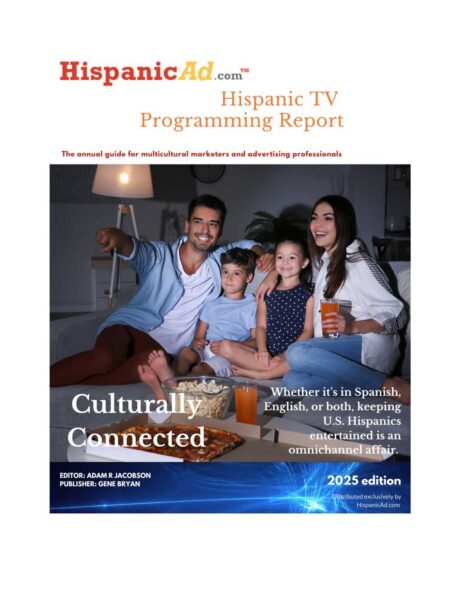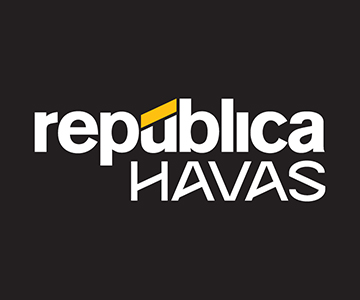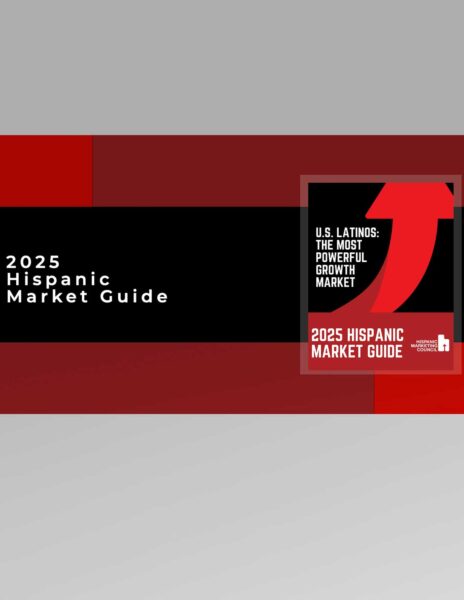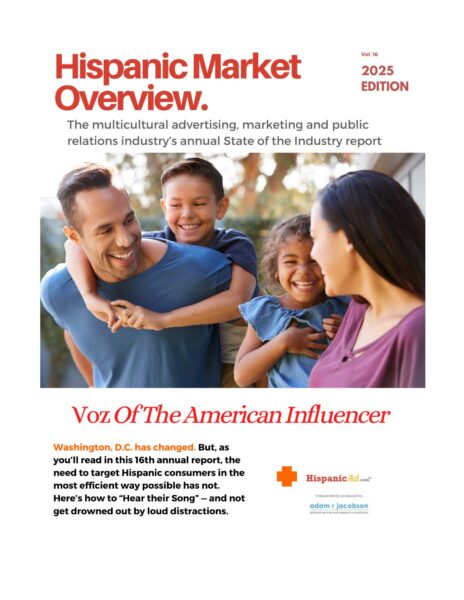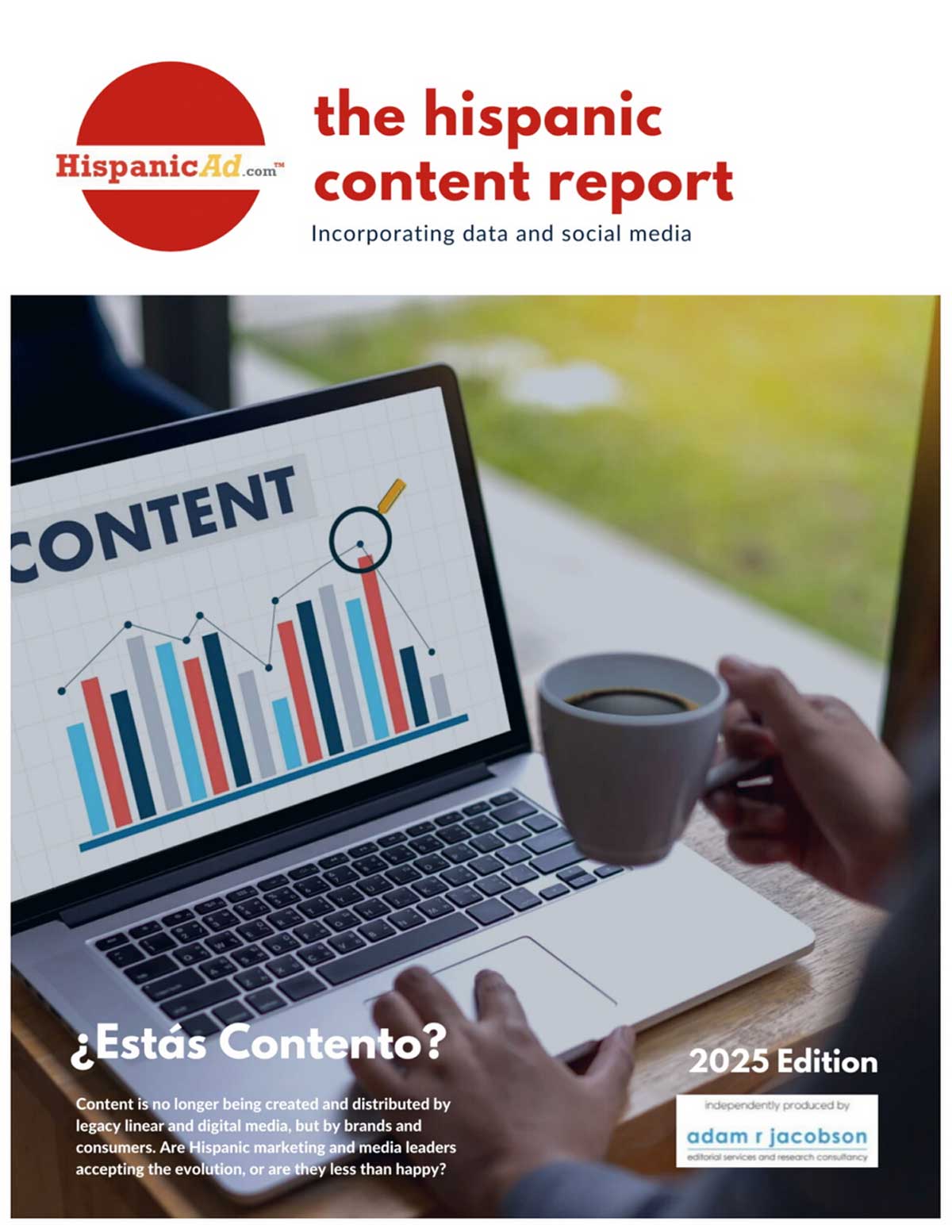The Critical Role Brands Play in Culture [REPORT]
 NBCUniversal, MAGNA, and Identity revealed Deconstructing Diversity Today, a new research study that explores the full spectrum of diversity, and the role that brands play in acknowledging and amplifying cultural identification. The study flips the script on outdated cultural archetypes, and reveals the multifaceted and fluid nature of how people identify today. The study also outlines tangible next steps that marketers can take to connect with multicultural audiences in authentic, culturally-relevant ways
NBCUniversal, MAGNA, and Identity revealed Deconstructing Diversity Today, a new research study that explores the full spectrum of diversity, and the role that brands play in acknowledging and amplifying cultural identification. The study flips the script on outdated cultural archetypes, and reveals the multifaceted and fluid nature of how people identify today. The study also outlines tangible next steps that marketers can take to connect with multicultural audiences in authentic, culturally-relevant ways


 Advertising is a small part of marketing. We don’t control the product. We don’t control the pricing. We don’t control the distribution or the customer service or the marketing strategy. The only thing we control is one aspect of communication.
Advertising is a small part of marketing. We don’t control the product. We don’t control the pricing. We don’t control the distribution or the customer service or the marketing strategy. The only thing we control is one aspect of communication. This week, I had the privilege of joining some of the best minds in advertising at ANA’s Multicultural Marketing & Diversity Conference. Having spoken at this important conference for five consecutive years, I wanted to use this year as an opportunity to address the entrenched habits in how we do marketing, and outline the path to building new habits needed to widen the opportunity for multicultural marketing. By Marc S. Pritchard – Chief Brand Officer at Procter & Gamble
This week, I had the privilege of joining some of the best minds in advertising at ANA’s Multicultural Marketing & Diversity Conference. Having spoken at this important conference for five consecutive years, I wanted to use this year as an opportunity to address the entrenched habits in how we do marketing, and outline the path to building new habits needed to widen the opportunity for multicultural marketing. By Marc S. Pritchard – Chief Brand Officer at Procter & Gamble Now in their 21st year, the awards recognize client-side marketers and their agency or media partners who produced multicultural advertising campaigns between June 2020 and June 2021. The winners of this year’s competition, open to both ANA members and nonmembers, were announced last night during a dinner celebration at the annual ANA Multicultural Marketing & Diversity Conference in San Diego.
Now in their 21st year, the awards recognize client-side marketers and their agency or media partners who produced multicultural advertising campaigns between June 2020 and June 2021. The winners of this year’s competition, open to both ANA members and nonmembers, were announced last night during a dinner celebration at the annual ANA Multicultural Marketing & Diversity Conference in San Diego. For the first time in its over 50-year history, Special Olympics launched a fitness campaign aimed at Hispanic athletes with intellectual disabilities. The campaign, Escuela de Fuerza, which translates to School of Strength, drops at a key moment during the pandemic when many athletes with intellectual disabilities are working out from home to avoid public spaces.
For the first time in its over 50-year history, Special Olympics launched a fitness campaign aimed at Hispanic athletes with intellectual disabilities. The campaign, Escuela de Fuerza, which translates to School of Strength, drops at a key moment during the pandemic when many athletes with intellectual disabilities are working out from home to avoid public spaces. As we approach the 23rd annual ANA Multicultural Marketing & Diversity Conference, it’s a good time to step back and reflect on news from the past year that is relevant to multicultural marketing and diversity. By Bill Duggan / Association of National Advertisers
As we approach the 23rd annual ANA Multicultural Marketing & Diversity Conference, it’s a good time to step back and reflect on news from the past year that is relevant to multicultural marketing and diversity. By Bill Duggan / Association of National Advertisers Claritas releases its annual U.S. Hispanic Market Report. On this episode of The Marketing Insider, popular guest Ron Cohen, VP of Practice Leadership at Claritas, joins us to talk facts and figures.
Claritas releases its annual U.S. Hispanic Market Report. On this episode of The Marketing Insider, popular guest Ron Cohen, VP of Practice Leadership at Claritas, joins us to talk facts and figures. Consumer confidence has dropped by 4.2 points over the past seven days to read at 53.6 in this week’s Ipsos-Forbes Advisor U.S. Consumer Confidence Tracker. Sentiment is now exactly on par with the pandemic average and is at its lowest level since February 24, eight months ago.
Consumer confidence has dropped by 4.2 points over the past seven days to read at 53.6 in this week’s Ipsos-Forbes Advisor U.S. Consumer Confidence Tracker. Sentiment is now exactly on par with the pandemic average and is at its lowest level since February 24, eight months ago. Initial results from the first-ever Diversity, Equity and Inclusion Census of the global marketing industry have identified key challenges around family status, age and gender as well as ethnicity and disability.
Initial results from the first-ever Diversity, Equity and Inclusion Census of the global marketing industry have identified key challenges around family status, age and gender as well as ethnicity and disability. Over the past months, we have been reading about how advertisers have increased their investment commitment towards minority-owned media companies. While this is a critical movement, missing from the debate is an important discussion around what kind of messages these advertisers are planning to use in these new and more diverse media plans. By Isaac Mizrahi – Co-President of ALMA
Over the past months, we have been reading about how advertisers have increased their investment commitment towards minority-owned media companies. While this is a critical movement, missing from the debate is an important discussion around what kind of messages these advertisers are planning to use in these new and more diverse media plans. By Isaac Mizrahi – Co-President of ALMA We often encounter misperceptions about agency new business in the course of our work. They are persistent — and even dangerous — because they can hold your agency back from achieving its best new business outcomes. Here are five of the most common misperceptions. By Mark Duval – The Duval Partnership
We often encounter misperceptions about agency new business in the course of our work. They are persistent — and even dangerous — because they can hold your agency back from achieving its best new business outcomes. Here are five of the most common misperceptions. By Mark Duval – The Duval Partnership Six months after its first study, PwC and IAB, the digital media and marketing trade association, have partnered again with industry thought leaders across the digital ad-supported ecosystem to discuss key challenges and opportunities facing this industry in a report titled “IAB Outlook: 2022 Digital Ad Ecosystem”.
Six months after its first study, PwC and IAB, the digital media and marketing trade association, have partnered again with industry thought leaders across the digital ad-supported ecosystem to discuss key challenges and opportunities facing this industry in a report titled “IAB Outlook: 2022 Digital Ad Ecosystem”. Over the past decade, Hispanic Americans were the primary driver of labor force growth, registered above-average income gains, and accounted for a growing share of spending. Recent trends suggest Hispanics are likely to exert an even greater influence on growth over the coming decade.
Over the past decade, Hispanic Americans were the primary driver of labor force growth, registered above-average income gains, and accounted for a growing share of spending. Recent trends suggest Hispanics are likely to exert an even greater influence on growth over the coming decade. Growth in the number of U.S. households during the 2010s slowed to its lowest pace in history, according to a Pew Research Center analysis of newly released 2020 census data.
Growth in the number of U.S. households during the 2010s slowed to its lowest pace in history, according to a Pew Research Center analysis of newly released 2020 census data.








